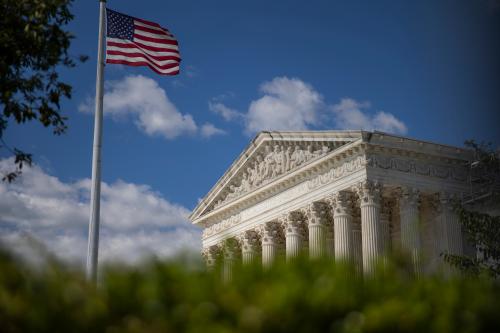What do Merrick Garland, David Tatel and Jose Cabranes have in common?
All are sitting federal court of appeals judges who were nominated by Democratic presidents. All three are deeply admired by their colleagues and are among a small group of the very finest federal judges in the country. And all three have names you probably won’t hear often in public discussions about whom President Obama should tap to replace retiring Justice David H. Souter.
Garland: white guy. Tatel: white guy and, at 67, too old. Cabranes: Hispanic, sure, but even older.
I have nothing against the people whose names have so far been floated as possible nominees (some of them are excellent), and I’m not against diversity on the high court. Far from it: It’s important to have a court that looks like America, and it is particularly important that following Sandra Day O’Connor’s retirement in 2005 an additional woman join the high court.
That said, there are significant costs to the nominating system that we have developed, in which gender, ethnicity and age have, from the very start of the search for Souter’s replacement, placed off-limits many lawyers and judges whose colleagues regard as some of the best in their profession. The dirty little secret is that the conservative talent pool on the federal courts these days is larger and deeper than the liberal one, mainly because Republicans have been in power far longer than Democrats recently and have therefore had more opportunity to cultivate a strong bench on the bench.
While both parties feel pressure to keep the bench diverse, Democrats have less latitude for bucking these expectations in judicial nominations than Republicans do. The core constituency that Republicans must satisfy in high court nominations is the party’s social conservative base, which fundamentally cares about issues, not diversity, and has accepted white men who practice the judging it admires. By contrast, identity-oriented groups are part of the core Democratic coalition, so it’s not enough for a Democrat to appoint a liberal. At least some of the time, it will have to be a liberal who also satisfies certain diversity categories.
The age issue has particularly striking consequences. It used to be commonplace for presidents to appoint justices who were well into their 60s. Lewis Powell, Earl Warren, Charles Evans Hughes (the second time around), William Howard Taft and Oliver Wendell Holmes, for example, were at least 60 when nominated, as was Justice Ruth Bader Ginsburg when President Clinton nominated her in 1993. Older judges brought experience to the table, and because life tenure is shorter for them than for younger judges, the stakes are lower in their confirmations.
Yet the ever-escalating political war over the courts has put a premium on youth — on justices who can hang around for decades as members of rival ideological camps. Judge J. Harvie Wilkinson III, one of the most esteemed conservative jurists in the country, might well be on the Supreme Court today, for example, had he not had the temerity to be 60 when O’Connor retired and opened up a slot. Nor is Obama likely to follow Clinton’s lead in declining to discriminate against the late-middle-aged. After all, if conservatives only appoint relative youngsters such as John G. Roberts and Samuel Alito (50 and 55, respectively, at the time of their nominations), it’s unilateral disarmament for a liberal to do otherwise.
The result is a strange conversation about who should replace Souter — one that self-consciously omits many of the judges whose work is most actively studied by those who engage day-to-day with the courts. This may well be a reasonable price to pay for a diverse bench, and for those who don’t read judicial opinions, it is in any event an invisible price. But let’s be candid about paying it.



Commentary
Op-edThe Best Judges Obama Can’t Pick
May 3, 2009